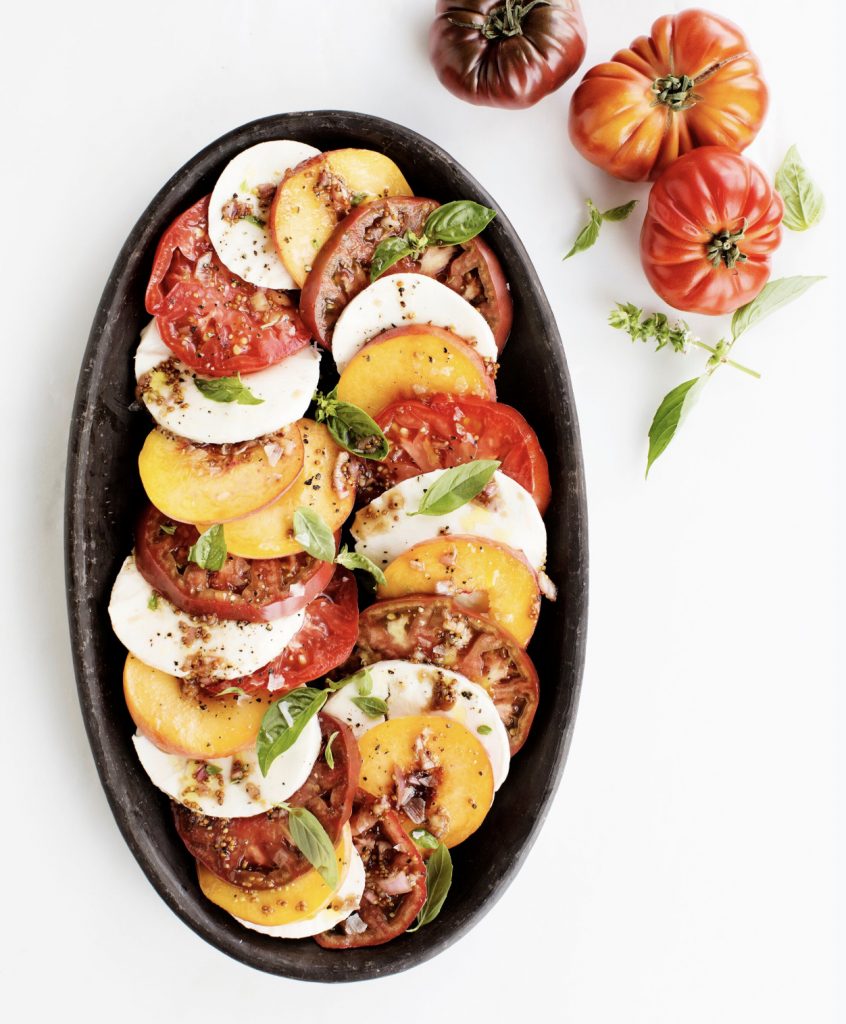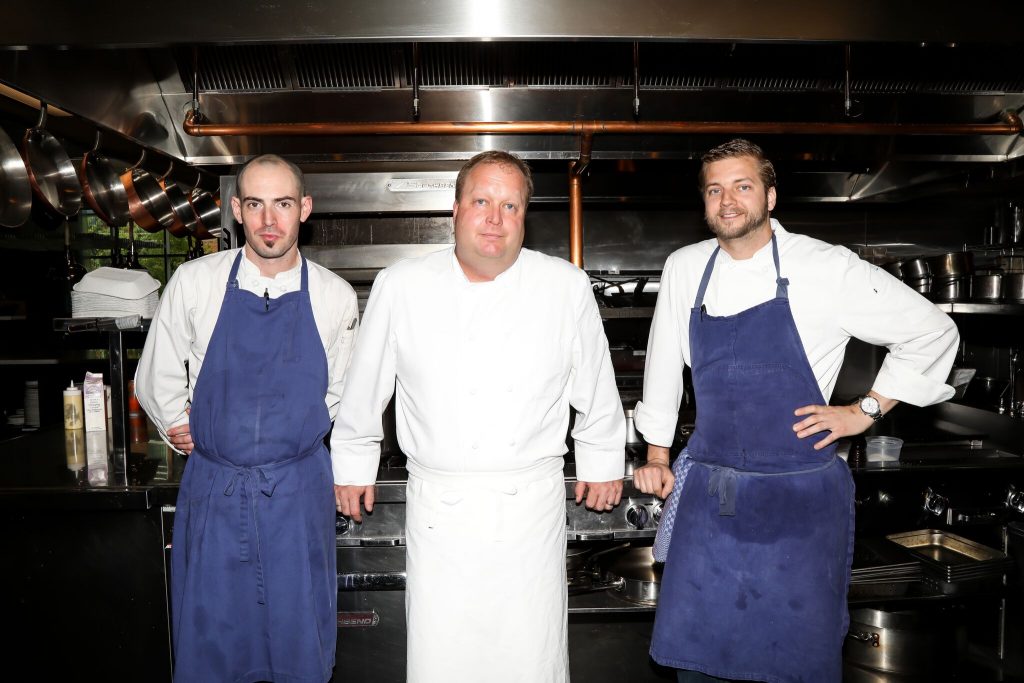
“I mean certainly, there are gifted people who have a specific talent. But even with that talent, you still have to practice a lot to get anywhere . . . You have to have the discipline to do it. I think it was important that I learn that discipline.”
Discipline is a word that comes up a lot when talking to Chef Andrew Little. It takes discipline, he tells me, to efficiently clean a copper pot. It takes discipline to properly use salt. It takes discipline—and a hell of a lot of stamina—to simultaneously oversee two restaurants.
Chef Little does not lack discipline.
Three and a half years after moving to Nashville to open Josephine—the 12South farmhouse spot that earned him a James Beard semifinalist Best Chef Southeast award earlier this year—Little has added a second location to his load. In April, he became the executive chef of Prima, the upscale Gulch restaurant formerly headed by Sal Avila. Together, the two restaurants make up two-thirds of Little’s and Jim Lewis’ Community Hospitality restaurant group (the third concept in the group is Burger Up, which they acquired back in 2014).
“I make a lot of trips up and down 12th,” Little says with an exhausted chuckle.
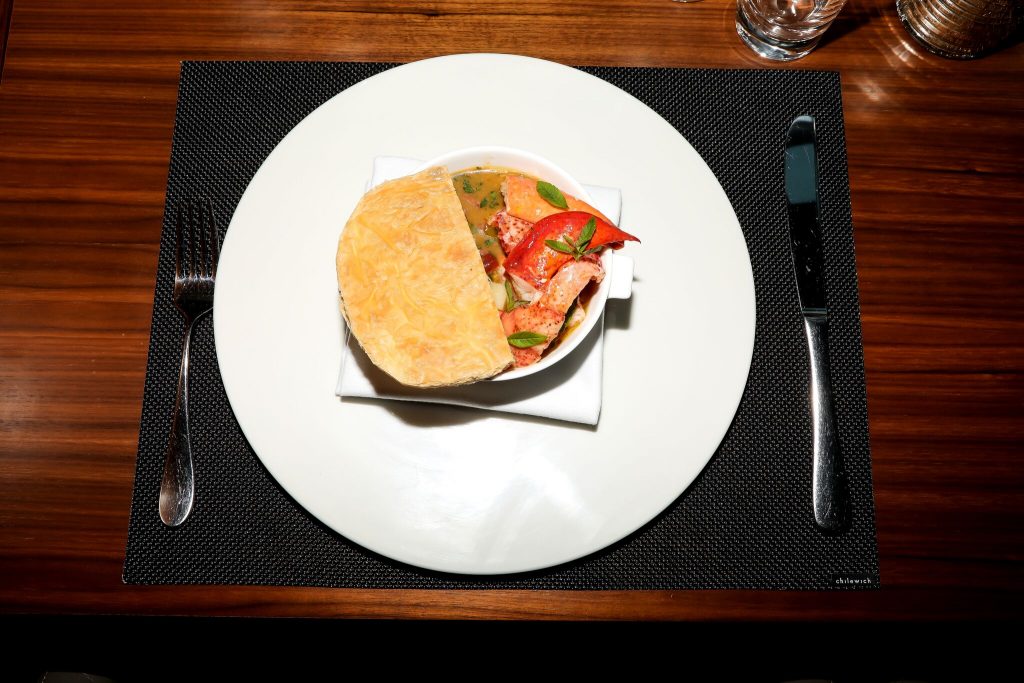
It’s an hour before Prima opens for dinner, and Little and I are in a private dining room looking out at English artist Bruce Munro’s 1,800-light-bulb chandelier installation. Like almost everything else in Prima, the glass-walled dining room is shiny and industrial and vaguely Art Deco. I can imagine Bruce Wayne throwing a Harvey Dent fundraiser here, or Daniel Craig investigating some MI6 business at a table on the second floor.
Since its 2014 opening, this aesthetic has been something of a double-edged sword for Prima: on the one hand, the space is, and I say this knowing full well that a ton of people say this about shiny, new things in Nashville, beautiful. On the other hand, the space is so beautiful that it could potentially eclipse—or even turn you off of—the food. As Jim Myers, Nashville’s patron saint of food critics, aptly put it: “Prima suffered out of the gate from an identity crisis that relied more on talk about the chandeliers than on a menu pulled in too many directions, something I always put squarely on management.”
This isn’t news to Little.
“This is a big, beautiful space. I am also cognizant of the fact that it can be . . .” Little stops, looking through the glass at his staff, who are running around the massive compound preparing for the dinner rush. “People can be maybe a little put back, a little challenged by the space because it’s very grand.”
That’s understandable, but there are some subtle touches that bring the “new” Prima back down to earth: the staff wears jeans and clogs (a nod to Little’s upbringing in Pennsylvania Dutch Country), the summer tasting menu is designed to mimic a golf scorecard (Little once had plans to be a high school history teacher/golf coach), and Little and co. serve some comforting crowd pleasers (the smoky, sweet carrots that come with the Hudson Valley Duck make me wish it were fall already). It all comes together to make Prima a little less intimidating, a little more inviting, than the space might lead you to believe—and that’s not an accident.
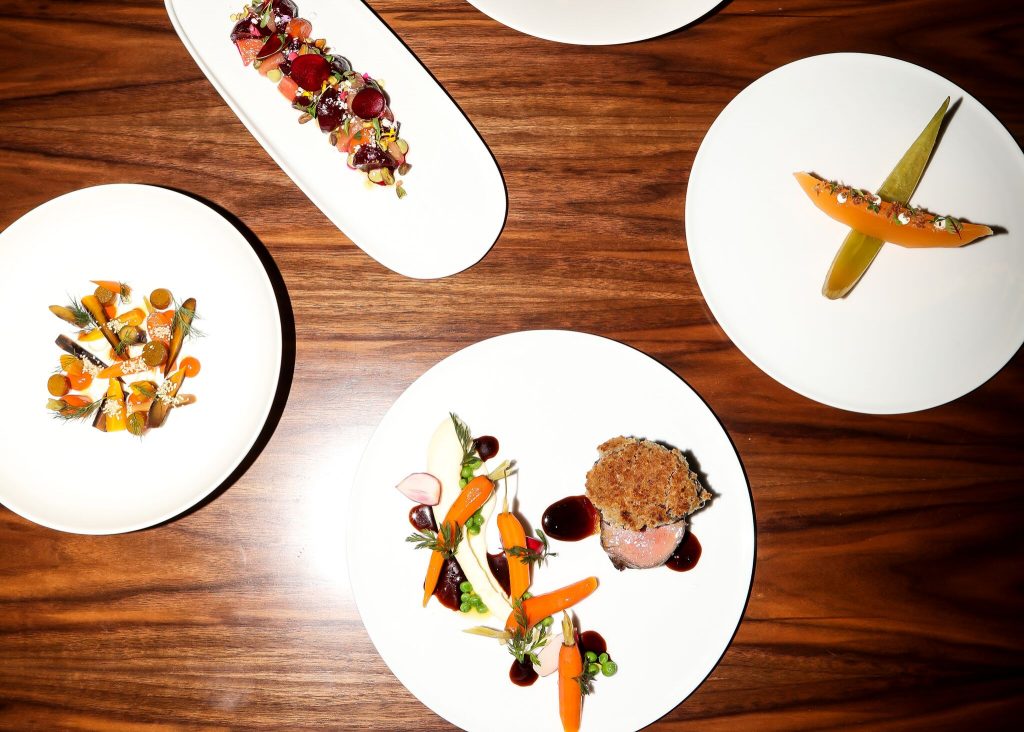
“I don’t ever want people to feel like the dining experience is challenging in any way. The idea for me is you go to restaurants because you want to feel better leaving them than you did going in,” Little explains.
“I also really feel like there is something to be said for everything making sense. If the food is going to be a certain way, then the service needs to be a certain way, then the flowers need to be a certain way, right down to what the waiters are wearing needs to be a certain way. Everything needs to flow and be one big continuous circle. That’s very important to me—that it’s not just the food. It’s every little detail making sense.”
This obsession with discipline and details goes back to Hanover, Pennsylvania, where Little was raised as the only child of two public school teachers. The chef says childhood in the small town was idyllic and that he spent most of his time “doing what kids do”—riding bikes, playing baseball, and other Norman Rockwell-y things. He also remembers that between teaching kids, grading papers, sponsoring clubs, directing plays, and coaching sports, his parents didn’t ever stop.
“They would get up at six in the morning, have breakfast, and they would go to work. And I would go to school early with them,” Little remembers. “I saw how hard they worked—I don’t really know any other way. So that discipline and drive really comes from watching them.”
Even with his busy schedule, Little’s dad—who would go on to become his son’s middle school principal—somehow found time for a serious vegetable garden.
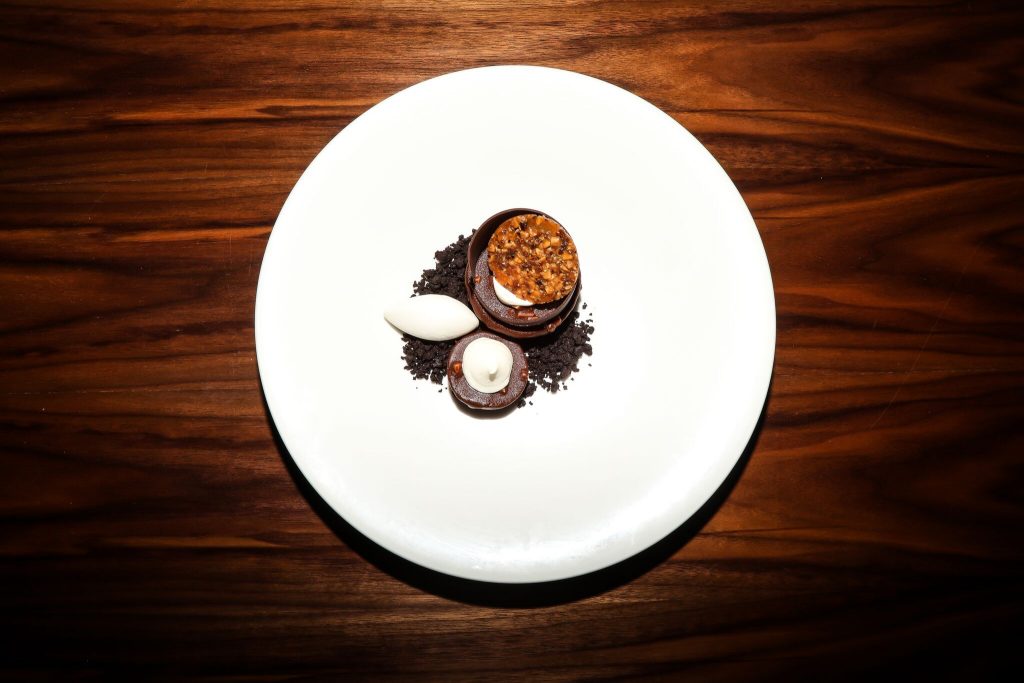
“[It’s] tough to pick a more physically involved hobby than gardening, and he didn’t do it halfway,” Little says. “I mean his gardens looked like something you would see in a magazine. They were perfect. There was no weed to be found. There were nice little pathways through them.”
The immaculately kept garden marked the beginning of Little’s lifelong love of fresh produce—a passion that’s evident in Prima’s extensive use of veggies and herbs like coriander, watercress, carrots, beets, and sorrel. Though he now understands how the readily available, homegrown food impacted his cooking, at the time, Little didn’t think twice about the garden.
“That’s something that I grew up around—the idea of fresh vegetables,” he explains. “When all the beets were ready, we would eat some, but then they would be put down in our freezer in the basement. That’s what we ate throughout the wintertime. It really wasn’t until college that it dawned on me that everyone didn’t do that—that people went to the store and bought frozen vegetables or whatever.”
Little also acknowledges the impact of Hanover’s German, Amish, and Dutch foodways. In case you’re rusty on your Pennsylvania history: Hanover is in the rural, central part of the state known as Pennsylvania Dutch Country (just above the Mason-Dixon Line). That label, however, is a bit of a misnomer: during Pennsylvania’s settlement, the term Dutch was an American catchall used to describe anyone of remotely German descent (plus, a lot of German families claimed Dutch heritage following anti-German sentiments post-WWII, but that’s another story). As such, most of Little’s childhood community, including his family, was of German descent, which meant he grew up eating his fair share of shoofly pie, pork, and sauerkraut.
“It was just what our family ate,” he explains. “I didn’t know that every little town didn’t have access to a bunch of different butchers where your friends who are raising pigs can take their pigs.” Later in our conversation, Little laments losing an old polaroid of him and his grandfather next to a freshly slaughtered pig: “I’m not even four feet tall, standing beside this hog who’s been shot and gutted.”
In addition to the baseball, gardening, and pig slaughtering, Little spent a large portion of his childhood playing music. What started with piano lessons from his mom (“That didn’t go over very well”) transitioned into orchestra in elementary school and band in high school. After playing trumpet and baritone, Little arrived at tuba as a junior. He didn’t necessarily choose the instrument (the band just happened to have a tuba opening), but he was a natural. He was so natural, in fact, that he got a music scholarship at James Madison.

“I just went with it—not necessarily for a love of the music or for a love of the instrument,” he says indifferently. “I really just loved achieving something.”
Once Little arrived at James Madison, though, he ran into an issue that’s all too familiar to music majors: everyone there was good. In Hanover, he’d been the big fish in a small pond, but in college, he was mediocre at best. Little’s solution, like his solution to most problems, was to work harder. He rehearsed for eight hours a day in the campus practice rooms, and within a year, he was once again a big fish—this time in a big pond. However, the top wasn’t all it was cracked up to be.
“I had friends and colleagues who loved sitting in the listening library and listening to symphonies, studying the music, and I hated that,” he says. “They loved the idea of being a musician in the same way that I now love the idea of being a chef . . . I wasn’t willing to sacrifice getting through with undergrad school and moving to a city and teaching lessons or working at a hardware store or something while I was trying to make it . . . I didn’t want to struggle. If you don’t want to struggle, then you don’t love it.”
Following undergrad, Little briefly worked at an actuarial consultant firm (“office work was not for me”) before going back to school in Pennsylvania to be a high school history teacher (and golf coach). He started waiting tables at a local country club to finance his education, but he was quickly drawn to the back of house. He didn’t finish one semester of school.
“I really gravitated toward the teamwork, the camaraderie of the kitchen,” Little remembers. “Working nights, working weekends, working holidays is what I did anyway as a musician. It wasn’t like this radical shift in my life. And so yeah, from there it became an obsession. How can I get better? How can I get better faster? How can I learn as much as I can about this?”
The answer? Culinary school. Little looked up the best school in the country, applied, got accepted, and moved to New York City. Before he knew it, he was holed up in the Culinary Institute of America’s library every day, watching videos of every chef who’d ever given a demonstration at the school.
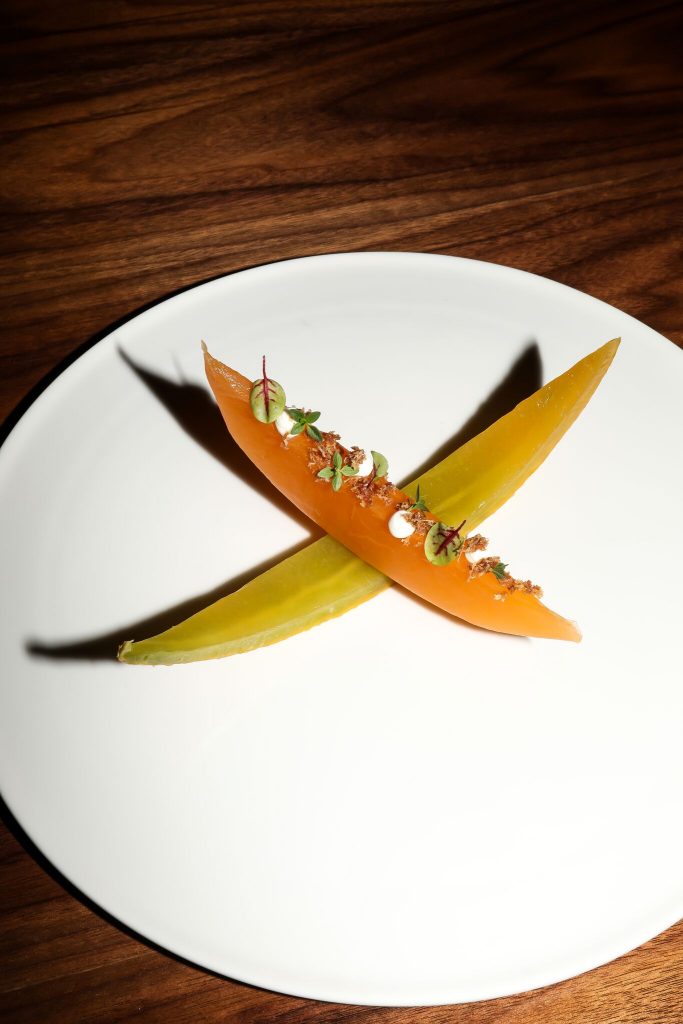
“In the same way that my friends in music school would sit in the library and just listen to music over and over again, I was watching the chef demonstrations. Even to the point where I tried to steal some of the videos—you’re not allowed to do that,” he remembers, laughing.
After graduating with perfect attendance, Little worked under the “Pope of American Cuisine,” Patrick O’Connell, at The Inn at Little Washington for a year. He went on to be the self-described “chef, cook, and dishwasher” at Pennsylvania’s Evermay-on-the-Delaware before returning to Hanover to oversee the Sheppard Mansion, a now-shuttered bed and breakfast.
Up to this point, Little admits, he could cook well and run a restaurant, but it took returning home to find his own voice. Inspired by heritage-forward chefs like Emeril Lagasse and Husk’s Sean Brock, Little’s Sheppard dishes pulled from his Pennsylvania Dutch roots. Brock’s updated take on Southern cuisine particularly spoke to him: “I thought, Why aren’t we looking at Pennsylvania Dutch food? We could be doing that. There are a lot of similarities [to Southern food]: it’s agrarian-based, and there’s the idea of needing to grow enough throughout the summertime to put up for the winter and curing meats . . . That’s where it became really important to me, and I think that’s really where I started to define my own personal style of cooking.”
In 2013, Little brought that style to Josephine, a restaurant he says he applied to “a little bit on a whim.” After the closure of Sheppard, he was looking into jobs all over the country. Nashville stood out because his wife’s family is from Knoxville; plus, if the interview went poorly, he figured they’d still get a Tennessee mini-vacation out of the trip.
"If you don’t want to struggle, then you don’t love it."
Three and a half years, one James Beard nod, and rave reviews from national and local press later, it’s safe to say the interview did not go poorly. Josephine now stands as a testament to Chef Little’s brand of Southern-meets-Pennsylvania-Dutch farmhouse cuisine. And though he admits it’s “now running smoothly,” he’s still not resting on his laurels at either of his locations.
“I want [diners] to leave both Josephine and Prima and say, ‘Man, that’s my favorite restaurant,’” he says. “The idea of chasing technical perfection [is] okay, but I want to chase the idea that people are coming because they want to have a great time.”
A few days after our interview, I’m eating at Prima, this time almost directly under Munro’s installation. Summer tasting menu dishes like the light, airy Amish cantaloupe and hearty rabbit with chanterelle mushrooms scream Hanover. But there are enough Tennessee touches—Bob Woods ham, local greens from Nashville Grown, Bloomsbury Farms tomatoes—to keep it from being a purely Pennsylvanian Dutch affair. And while some of the dishes, like the gumbo-y rabbit or the cornmeal-battered fried oysters, dip into the whole “elevated Southern” thing, none of it’s quite Sean Brock, either. It’s all distinctly Andy Little, and it’s all distinctly Nashville.
“I think of these restaurants as restaurants that grew up in Pennsylvania and now call Nashville home,” Little told me at one point during our interview. “I’m just so happy that those restaurants are in Nashville because they can’t be anywhere but Nashville.”
If Prima once lacked an identity, it’s found one in Chef Little.
Suggested Content
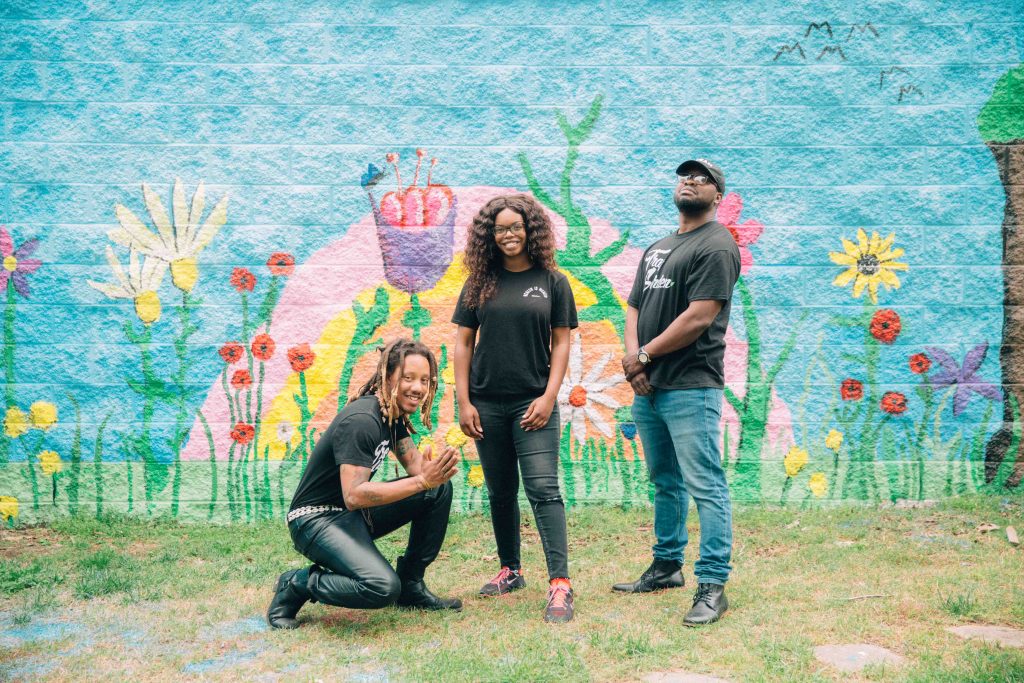
Can You Dig It?
How urban farming nonprofit Trap Garden is working to eradicate Nashville’s food deserts

Double Scoop of Happiness
Kokos Ice Cream creators Jerusa van Lith and Sam Brooker want to show you just how good ice cream can be.

